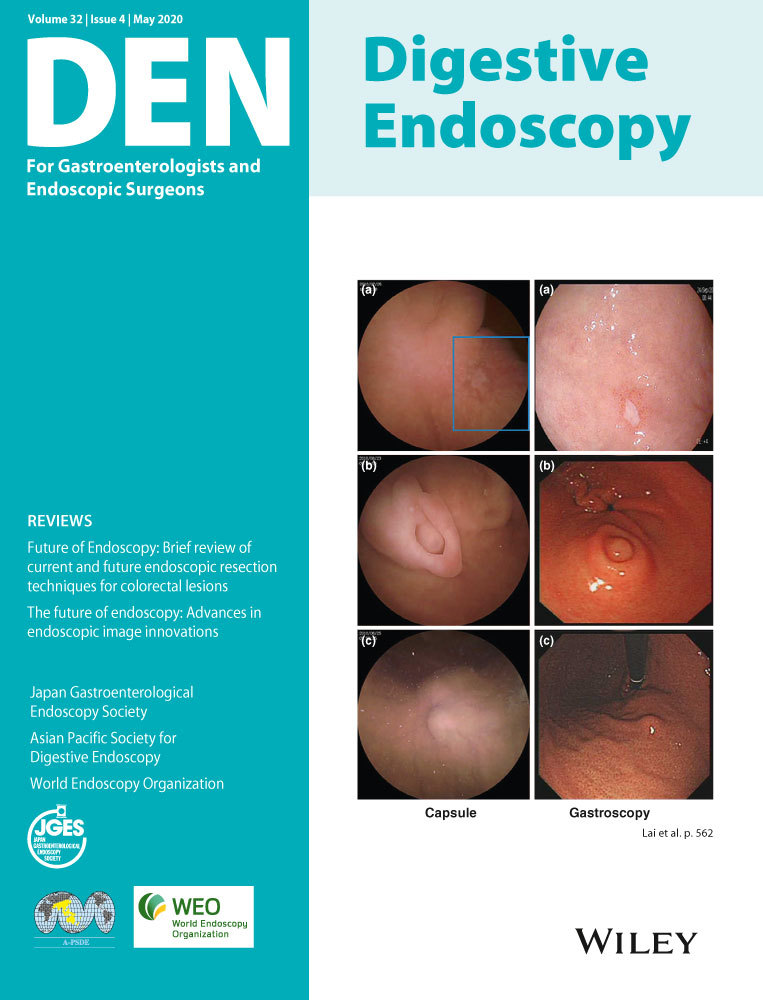Feasibility of underwater endoscopic mucosal resection and management of residues for superficial non-ampullary duodenal epithelial neoplasms
Abstract
Background and Aim
Underwater endoscopic mucosal resection (UEMR) is effective for superficial non-ampullary duodenal epithelial neoplasms (SNADEN). However, the incidence of residual lesion after UEMR, especially for large lesions (≥20 mm), and their prognosis remain unclear. We aimed to assess the incidence of residual lesions and further outcomes after UEMR for SNADEN.
Methods
We carried out a retrospective study at a tertiary cancer institute. Candidates for the study were systematically retrieved from an endoscopic and pathological database from January 2013 to April 2018.
Results
A total of 162 SNADEN resected with UEMR were analyzed. Median (range) procedure time was 5 (1–70) min. En bloc resection rates for large lesions (≥20 mm) and small lesions (<20 mm) were 14% and 79%, respectively. Intraprocedural bleeding occurred in one (0.6%) case, but no intraprocedural perforation occurred during the study. Delayed bleeding occurred in two (1.2%) cases and delayed perforation occurred in one (0.6%) case. A total of 157 (97%) lesions were followed up by at least one endoscopic examination. Of these lesions, residual lesions were recognized in seven cases (5%). Additional UEMR was carried out in five lesions and underwater cold snare polypectomy in one lesion. One lesion was observed without additional treatment. After salvage intervention, no cases experienced further residual lesions.
Conclusion
Although UEMR for SNADEN can be relevant when other efficacious procedures are unavailable, careful follow up for residual lesions is required especially after piecemeal resection for large lesions.
Conflicts of Interest
Authors declare no conflicts of interest for this article.




